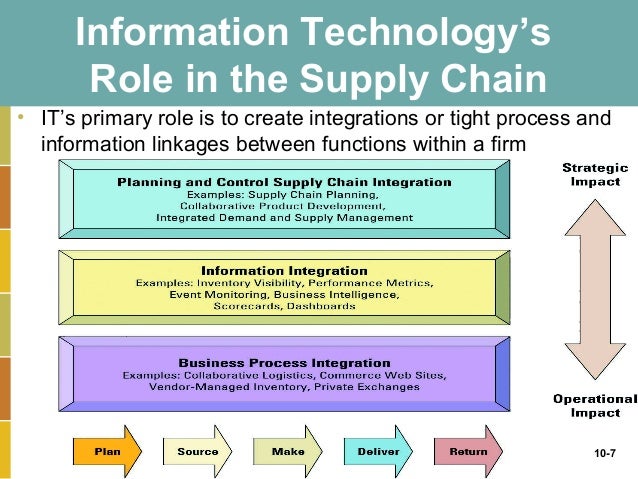- Supply chain => consists of all parties involved, directly or indirectly, in the procurement of a product or raw material.
- Supply chain management (SCM) => involves the management of information flows between and among stages in a supply chain to maximize total supply chain effectiveness and profitability.
- The supply chain has three main links : => materials flow from the suppliers and their upstream suppliers at all level. => transformation of materials into semi-finished and finished products, or the organization's own production processes. => distribution of products to customer and their downstream customers at all levels.
- Visibility - the ability to view all areas up and down the supply chain.
- Consumer behavior - the behavior of customers has changed the way businesses compete.
- Competition - 1. supply chain planning (SCP) software => uses advanced mathematical algorithms to improve the flow and efficiency of the supply chain while reducing the inventory. 2. supply chain execution (SCE) software => automates the different steps and stages of the supply chain.
- Speed - the company's ability to satisfy continually changing customer requirements efficiently, accurately, and quickly.
Supply Chain Management Success Factors :
- The following are the keys to SCM success :
- make the sale to suppliers.
- wean employees off traditional business practices.
- ensure the SCM system supports the organizational goals.
- deploy in incremental phases and measure and communicate success.
- be future oriented.






No comments:
Post a Comment